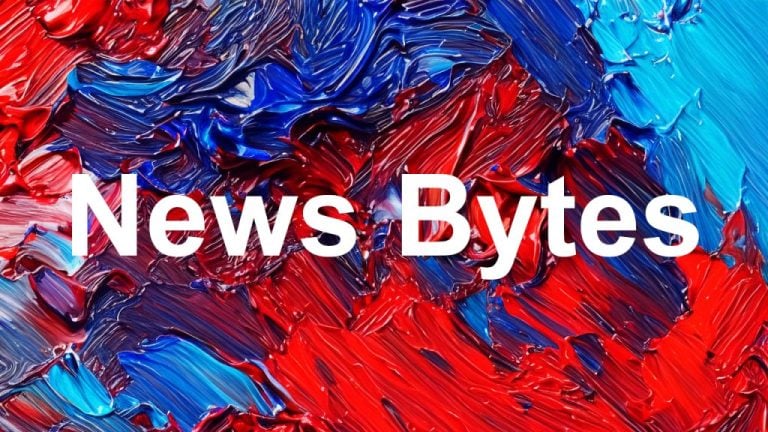
The AVAX tokens were purchased for $100 million a month before the infamous Terra Luna collapse.
The Avalanche Foundation completed the repurchase of 1.97 million AVAX tokens from the now-defunct Luna Foundation Guard (LFG), which had acquired them to support the Terra blockchain ecosystem.
In an announcement sent to Cointelegraph, the Avalanche Foundation said it had completed the token buyback process.
While Avalanche’s filing said it would purchase the tokens at $45.5 million, the Avalanche (AVAX) token traded at $26.95 at the time of writing, making 1.97 million tokens worth about $53 million at current market prices.
 Singapore-based Terraform Labs and its founder Do Kwon have reportedly reached a preliminary settlement with the U.S. Securities and Exchange Commission (SEC) after being accused of misleading cryptocurrency investors before the 2022 collapse of terrausd (UST), the project’s now-defunct algorithmic stablecoin. According to a court filing, the settlement terms are currently undisclosed and the alleged […]
Singapore-based Terraform Labs and its founder Do Kwon have reportedly reached a preliminary settlement with the U.S. Securities and Exchange Commission (SEC) after being accused of misleading cryptocurrency investors before the 2022 collapse of terrausd (UST), the project’s now-defunct algorithmic stablecoin. According to a court filing, the settlement terms are currently undisclosed and the alleged […]
Decentralized finance protocol CurveDAO has successfully launched its algorithmic stablecoin crvUSD on the Ethereum network.
Decentralized finance (DeFi) protocol Curve Finance has launched its native algorithmic U.S. dollar-pegged stablecoin, dubbed “crvUSD” on the Ethereum mainnet — minting more than $22 million worth of the crvUSD so far.
According to data from blockchain explorer Etherscan, the contract has minted more than $22 million worth of crvUSD in the past 8 hours, with $20 million of that amount minted within the first 5 minutes.
The deployment of crvUSD on the Ethereum network is a significant step towards the public release of the algorithmic stablecoin. Notably, the stablecoin remains inaccessible to general users, pending integration with Curve’s front-end user interface on its official website.
Responding to a query about when users could expect to see the stablecoin released to the public in the official Curve Finance Telegram chat, an admin claimed it will be coming “soon.”
As many figured - deployment of crvUSD smart contracts has happened!
— Curve Finance (@CurveFinance) May 3, 2023
This is not finalized yet because UI also needs to be deployed. Stay tuned!
At the time of publication, Curve Finance is one of the largest DeFi protocols in the industry, with roughly $4.4 billion in total value locked (TVL), according to data from DeFiLlama.
Algorithmic stablecoins became the focal point of industry-wide criticism following the collapse of the Terra ecosystem in May 2022 when the TerraUSD (UST) stablecoin lost its peg and the value of its sister token Terra — later renamed Terra Classic (LUNC) — plunged by more than 99%. UST's value was maintained by a complex arbitrage mechanism that was eventually brought down by a group of sophisticated traders.
Curve’s crvUSD differs from the now-defunct UST, by utilizing a similar design similar to MakerDAO’s (MKR) DAI (DAI) stablecoin. According to the crvUSD whitepaper, crvUSD will function as a "collateralized-debt-position" stablecoin, meaning that users must deposit collateral in order to take out a loan in crvUSD. The preferred asset for use as collateral has not yet been specified by Curve Finance.
Curve isn’t the only DeFi protocol with its sights set on bringing an algorithmic stablecoin to market. Competitor protocol Aave (AAVE) released a testnet version of its “native decentralized, collateral-backed stablecoin” dubbed GHO in February this year.
Related: DeFi driving zkSync growth as 1inch deploys on Ethereum layer-2 scaling platform
Curve’s plan to release an algorithmic stablecoin was first announced by Curve Team member @mrblocktw in a Twitter post on July 21, 2022.
you know you know
— 區塊先生 ⚠️ (rock #58) (@mrblocktw) July 21, 2022
curve - stablecoin incoming $CRV #stablecoinWAR pic.twitter.com/sYg13WRLYz
Later the same day, Curve’s founder, Michael Egorov confirmed that the stablecoin would be overcollateralized at the ReDeFine Tomorrow Web3 summit.
Following the launch of the new stablecoin, the protocol’s native Curve DAO (CRV) token spiked approximately 7% according to data from TradingView. CRV is currently changings hands for $0.96.
Magazine: ZK-rollups are ‘the endgame’ for scaling blockchains, Polygon Miden founder
 Almost 12 months back, terrausd (UST), an algorithmic stablecoin, suffered a detachment from the U.S. dollar, causing the Terra ecosystem to crumble shortly thereafter. At present, supporters of the Terra Classic blockchain community are deliberating on a plan to revive the ecosystem by re-establishing the once-stable token’s peg with the U.S. dollar. In response to […]
Almost 12 months back, terrausd (UST), an algorithmic stablecoin, suffered a detachment from the U.S. dollar, causing the Terra ecosystem to crumble shortly thereafter. At present, supporters of the Terra Classic blockchain community are deliberating on a plan to revive the ecosystem by re-establishing the once-stable token’s peg with the U.S. dollar. In response to […] The Department of Justice (DOJ) and the Federal Bureau of Investigation (FBI) are reportedly investigating the collapse of the algorithmic stablecoin terra usd (UST) and the firm Terraform Labs. Unnamed sources say that former staff members from Terraform Labs, the company behind the Terra blockchain project, have been questioned by U.S. law enforcement. Unusual Relationship: […]
The Department of Justice (DOJ) and the Federal Bureau of Investigation (FBI) are reportedly investigating the collapse of the algorithmic stablecoin terra usd (UST) and the firm Terraform Labs. Unnamed sources say that former staff members from Terraform Labs, the company behind the Terra blockchain project, have been questioned by U.S. law enforcement. Unusual Relationship: […]
An Arbitrum-based algorithmic stablecoin project has fallen prey to a smart contract exploit, seeing $2 million stolen from users.
Prospective users of an Arbitrum-based decentralized finance (DeFi) project have been left out of pocket following a $2 million exploit.
Web3 security firm CertiK flagged the incident on Feb. 21, following an announcement from the Hope Finance Twitter account notifying users of the scam.
#CommunityAlert @hope_fin have announced the community has been scammed for ~$2m making this the largest #exitscam on Arbitrum in 2023.
— CertiK Alert (@CertiKAlert) February 21, 2023
$1.86m was transferred to @TornadoCash.
Hope_fin have posted steps for user's to withdraw their staked LPhttps://t.co/hJbFXiKujt
Details of the project are difficult to come by. The platform’s Twitter account was launched in January 2023 and outlined plans for an algorithmic stablecoin called Hope token (HOPE), which dynamically adjusts its supply relative to the price of Ether (ETH).
Posts on the account allege that a Nigerian national had executed the scam and transferred over $1.86 million to Tornado Cash shortly after the platform went live on Feb. 20. A member of the CertiK team told Cointelegraph that the scammer had changed the details of the smart contract, which led to funds being drained from Hope Finance genesis protocol:
“It appears that the scammer changed the TradingHelper contract which meant that when 0x4481 calls OpenTrade on the GenesisRewardPool the funds are transferred to the scammer.”
According to a tweet dated Feb. 13, the Hope Finance smart contract was audited by a Cognitos official. Cointelegraph reviewed the audit summary, which flagged two major contract function vulnerabilities.

This included an incorrect modifier and the possibility of reentrancy attacks. Despite flagging these vulnerabilities, Cognitos found that the smart contract code had passed the audit successfully.
Following the scam, Hope Finance shared information with users to withdraw staked liquidity from the protocol through an emergency withdrawal function.
Steps to withdraw your staked LP from the this fucking scam protocol
— Hope Finance (,) (@Hope_fin) February 21, 2023
1. Go on this linkhttps://t.co/HjuvQyxbUX
2. connect your wallet
3. click on emergency withdraw
Enter 0000000000000000000000000000000000000000000000000000000000000002 pic.twitter.com/5RxtgKXgoo
Arbitrum is an Ethereum layer 2 roll-up network that enables exponential scaling of smart contracts. Alongside Optimism, the two layer-2 protocols continue to handle an increasing amount of transactions within the Ethereum ecosystem.

Delphi Lab's general counsel said the SEC was being "more thorough than usual" in its lawsuit against Terraform Labs and its co-founder Do Kwon.
The United States Securities and Exchange Commission’s (SEC's) lawsuit against Terraform Labs and its co-founder Do Kwon could be seen as an SEC “roadmap” to taking down other stablecoins, according to a lawyer.
Gabriel Shapiro, general counsel at investment firm Delphi Labs, explained to his 33,800 Twitter followers on Feb. 16 that the SEC’s arguments in its complaint against Kwon and Terraform were “more thorough than usual.”
whew lad, lots to digest in the SEC lawsuit vs Do Kwon and Terraform Labs
— _gabrielShapir0 (@lex_node) February 16, 2023
right off the bat, a very interesting fact is that the SEC is being more thorough than usual--specifically running through the Howey test for various assets (UST, LUNA, and wLUNA) and also alleging that… https://t.co/1JsBQijMnw pic.twitter.com/qHuL6mKpeo
Shapiro’s analysis follows the SEC’s Feb. 16 lawsuit against Kwon and Terraform alleging they “orchestrat[ed] a multi-billion dollar crypto asset securities fraud involving an algorithmic stablecoin and other crypto asset securities.”
Shapiro suggested the case could serve as a “roadmap” for how the regulator may sue other stablecoin issuers in the future. He acknowledged the SEC made the case that Terra’s algorithmic stablecoin, TerraClassicUSD (USTC), constitutes a security:
“[The SEC] will allege that integration, promotion, marketing, commercial deals etc building the stablecoin ecosystems are ‘efforts of others’ that are ‘reasonably expected’ and can lead to profits in connection with the stables.”
He pointed out the SEC applied the four prongs of the Howey Test to argue that USTC, Terra Luna Classic (LUNC) — renamed from Terra (LUNA) — and Wrapped LUNA (wLUNA) all constituted securities under U.S. securities laws.

The SEC also argued that Terraform Labs breached U.S. securities laws by launching the Mirror Protocol, which allowed its users to create what Terraform called an “mAsset,” a crypto version of an asset that “mirrors” the price behavior of other assets such as stocks.
The regulator claimed Terraform Labs committed this securities-based swap through the MIR token — which Shapiro believes to be a “first” of all the cryptocurrency-related lawsuits filed by the SEC.
Shapiro noted the SEC’s claim that wLUNA constituted a “receipt” for a security was another “first.”

Ryan Sean Adams, the host of the crypto-oriented podcast Bankless, made a similar argument to his 221,300 Twitter followers on Feb. 16, noting that a legal victory against Terraform Labs would make it easier to go after other stablecoin issuers.
Gensler's next strategy is to go after Do Kwon and UST because he knows no one will defend them and if he wins he'll establish broad precedent for more control over crypto.
— RYAN SΞAN ADAMS - rsa.eth (@RyanSAdams) February 16, 2023
It's evil genius. https://t.co/FDLoeVcTLb
The Terra-linked tokens infamously crashed in May, 2022, which was in part triggered when USTC lost its peg to the U.S. dollar. As LUNC was closely linked to USTC, its price fell by virtually 100% and triggered a wider downturn in the crypto markets, wiping out approximately $40 billion from the crypto markets.
Kwon maintains that he is not “on the run,” and is believed to be residing in Serbia according to South Korean officials — who issued a warrant for his arrest.
Earlier in February, two South Korean prosecutors flew to the Balkan state to find Kwon, however, the search attempt was unsuccessful.
Cointelegraph contacted Terraform Labs for comment on the lawsuit but no immediate response was received.
 The U.S. Securities and Exchange Commission (SEC) has charged Terraform Labs and its CEO, Do Hyeong Kwon, with fraud, alleging that Kwon and his company orchestrated “a multibillion-dollar crypto-asset securities fraud.” The securities watchdog insists that Kwon raised billions from investors by creating an “interconnected suite of crypto-asset securities,” many of which were involved in […]
The U.S. Securities and Exchange Commission (SEC) has charged Terraform Labs and its CEO, Do Hyeong Kwon, with fraud, alleging that Kwon and his company orchestrated “a multibillion-dollar crypto-asset securities fraud.” The securities watchdog insists that Kwon raised billions from investors by creating an “interconnected suite of crypto-asset securities,” many of which were involved in […]
WAVES price and its USDN stablecoin lose value after the Digital Asset eXchange Association issues a caution notice and Upbit exchange delists the token.
Algorithmic stablecoins have had a rough year, starting with UST de-pegging to zero and the subsequent blow-up of Terra’s LUNA token which was used for the asset’s backing. Algorithmic stablecoins are not fully collateralized and rely on different mechanisms to maintain the peg, making them inherently fragile to market conditions.
The UST implosion created a domino effect that caused another stablecoin, Magic Internet Money (MIM) to de-peg. Despite the fragility of algorithmic stablecoins, new projects like Djed by Cardano (ADA) are still planning on launching, but that doesn’t mean that the concept has improved since the crises seen earlier in the year.
Let’s look at the latest de-peg event in the cryptocurrency space.
On Dec. 8, the Digital Asset eXchange Association (DAXA), which consists of the five major crypto exchanges in Korea issued a warning for Waves and its (WAVES) token.
The warning comes after the stablecoin, USDN which is backed by WAVES, de-pegged and has thus far failed to re-establish the $1 peg in more than 180 days. This means that the USDN protocol may liquidate WAVES through the automatic arbitrage process in an attempt to regain the peg. On Dec. 8, USDN was 16% below the peg.

The move by DAXA to issue the warning has led Upbit to delist both WAVES and USDN. The delisting, combined with the DAXA warning appears to be playing some role in the price decline currently seen in WAVES and USDN.
$WAVES and its stablecoin $USDN both crashing.
— Byzantine General (@ByzGeneral) December 8, 2022
Upbit delisting WAVES with a strong "investor warning" lmao.
Also hearing rumours of exit scam.
For as long as I can remember this project has been a total shitshow. pic.twitter.com/mnPv4aCik9
Algorithmic stablecoins are not alone in depegging. Constant concerns about Tether’s (USDT) backing and its general solvency continue to raise de-peg fears among all levels of investors.
Over the years, USDT has lost its peg but never to the extent seen with UST and USDN.
As the community continues to reel from algorithmic stablecoins, regulators are taking notice and placing priority on regulating the space.
The views, thoughts and opinions expressed here are the authors’ alone and do not necessarily reflect or represent the views and opinions of Cointelegraph.

“I thought we already figured this out, algorithmic stablecoins, not the best option,” a community member wrote on Twitter.
With the new announcement that Cardano is on its way to release an algorithmic stablecoin in 2023, various community members expressed concerns, comparing the project to Terra USD (UST), which caused great losses within the crypto space in 2022.
According to its developers, the stablecoin project Djed will be pegged to the U.S. dollar and backed by Cardano (ADA). Apart from this, it will be using another token as its reserve coin. The project highlighted that it will be overcollateralized and will have on-chain proof-of-reserves.
Despite the assurances given by the team, various community members expressed concerns, with some bringing the recently collapsed UST to the conversation.
One community member was seemingly confused as to why another algorithmic stablecoin has come out despite Terra showing that they could go wrong. “I thought we already figured this out, algorithmic stablecoins, not the best option,” they wrote. Meanwhile, another Twitter user mentioned that they would rather keep using Tether (USDT). According to the community member, algorithmic stablecoins already proved that they are not stable.
Cointelegraph reached out to Djed but did not get a response.
Related: UST aftermath: Is there any future for algorithmic stablecoins?
With concerns spurred by the advent of Djed coming out, Cointelegraph asked some of the major stablecoin projects if algorithmic stablecoin projects still have the potential to succeed despite the example shown by Terra USD.
In a statement, Tether told Cointelegraph that stablecoin projects like Terra had mechanisms designed to achieve stability, but failed in the end. The team explained that:
“Unlike collateralized stablecoins where each coin is fully backed by collateral, algorithmic stablecoins attempt to maintain their value via various market operations that have frequently been broken down dramatically.”
Meanwhile, USD Coin (USDC) issuer Circle told Cointelegraph in a statement that algorithmic stablecoins with complex collateralization structures and technological stabilization mechanisms do not have the same utility value as full-reserve, regulated dollar assets. “The collapse of Terra earlier this year underscored that not all stablecoins are created equal,” they said.